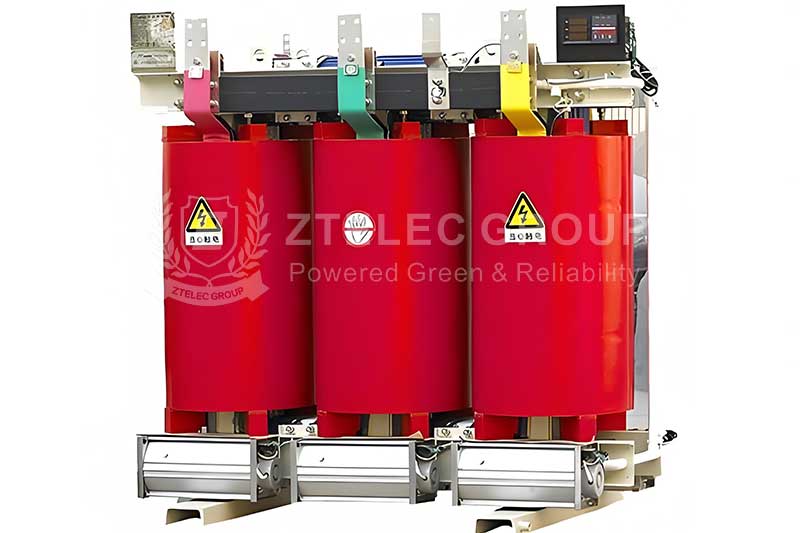How to prevent the transformer from overheating?
How to prevent the transformer from overheating?
1. Maintain the device
Regularly check whether the wiring of the transformer is tight, whether there is damage, corrosion and other conditions. Replace the damaged parts in time to ensure the good condition of the equipment.
2. Control the load
Plan the load reasonably to avoid excessive load. For the existing load is too large, it is necessary to increase the transformer capacity in time or adjust the circuit load reasonably.
3. Maintain ventilation
Set up vents for transformers and clean radiators or coolers regularly to ensure ventilation and heat dissipation. Place the device in a well-ventilated place.
4. Install temperature control device
Through the installation of temperature control device, the temperature of the transformer can be monitored in time. And the transformer can be automatically restored and alarm processed.

Why does the transformer overheat?
There are different possible reasons why a transformer could over heat, some of the possible causes for excessive heat in transformers are as listed below:
1. Overloading: Each transformer has a kVA rating, and kVA ratings are dependent on temperature. If the total load exceeds the transformer’s kVA rating, the transformer could overheat. As a solution, we can reduce the size of the load or replace the transformer with a larger one, with an increased maximum load and additional cooling features such as fans.
2. Excessive or sustained airflow by excessive winds or fans: Generally, the high winds in the environment would make for cooler temperatures for the transformer but it can also happen that the high winds travelling horizontally may disrupt the cooling fans of the transformer so that they can no longer function well, thus causing the transformer to overheat.
3. Misaligned or broken transformer fans.
4. Excess Current in the neutral of the transformer: This is usually caused by high zero sequence harmonic components.
5. Excessive dust blocking the air vent.
6. High ambient temperature.
7. Poor insulation.
8. Sustained overvoltage.
Apart from these there are many other possible reasons for Transformer Overheating and same needs to be analyzed on case to case basis.
The importance of preventing transformers from overheating
1. Ensure stable operation of power system
Transformers are crucial devices in power systems, responsible for converting electrical energy from one voltage level to another for use by users with different needs. If the transformer overheats, its internal insulation material may accelerate aging, leading to reduced insulation performance, and may even cause short circuit failure. This will not only damage the transformer itself, but may also cause a shock to the entire power system, resulting in interruption or instability of the power supply. Therefore, preventing transformer overheating is the basis of ensuring stable operation of power system.
2. Extend the service life of the transformer
The service life of a transformer is closely related to its operating environment and maintenance status. Overheating will accelerate the aging and damage of the internal components of the transformer, such as windings, insulation layers, iron cores, etc. By taking effective heat dissipation measures and regular maintenance, the temperature of the transformer can be reduced, thereby extending its service life. This can not only reduce the cost of replacing the transformer, but also reduce the loss of power outages caused by transformer failures.
3. Improve energy efficiency
Transformer in the process of voltage conversion will produce a certain loss, these losses are mainly in the form of heat dissipation. If the transformer overheats, its losses will increase, leading to a decrease in energy efficiency. By optimizing the design and operation of the transformer, as well as strengthening heat dissipation and maintenance, the loss and temperature of the transformer can be reduced, thereby improving energy efficiency. This helps to reduce energy consumption and environmental pollution and achieve sustainable development.
4. Ensure the safety of personnel and equipment
Overheating of the transformer may cause serious accidents, such as fire or explosion, which may threaten personnel and equipment. By strengthening the heat dissipation and maintenance of the transformer, the risk of overheating can be reduced, thus ensuring the safety of personnel and equipment. In addition, regular inspection and testing of transformer performance, timely discovery and treatment of potential safety hazards, is also an important measure to ensure the safety of personnel and equipment.
5. Reduce financial losses
The failure and damage caused by transformer overheating will not only affect the stable operation of the power system, but also cause economic losses. For example, due to transformer failure caused by power loss, maintenance costs, replacement costs, etc. will bring economic burdens to power enterprises and users. By strengthening the heat dissipation and maintenance of the transformer, the failure rate can be reduced and economic losses can be reduced.
- more+releated article
- 2025-12-13How to Select and Use Phenolic Cloth-base Lami
- 2025-12-13How Much Does Bakelite Sheet Cost? 2025 Price
- 2025-12-13Why are most 3240 epoxy boards yellow?
- 2025-12-13What are the Main Applications of FR4 Epoxy Bo
- 2025-12-13Why Does the Price of Insulating Paperboard Va
- 2025-12-13Heat-Resistant DDP Insulation Paper
- 2025-12-13Comparison of Heat-Resistant DDP Insulating Pa
- 2025-12-13G10 and FR4 Epoxy Boards: Commonly Used for Ge
- 2025-12-13The Price of Heat-Resistant DDP Insulation Pap
- 2025-12-13How to Choose Epoxy Laminate Materials for Gen






